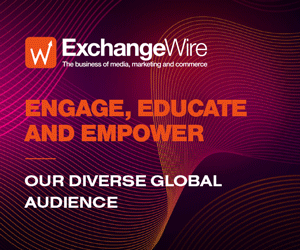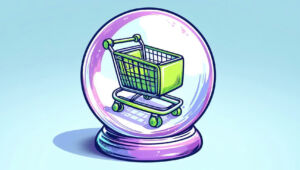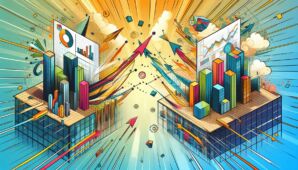How AI is Changing the Ad Tech Industry Beyond Just Automation
by on 20th May 2025 in News

Ahead of ATS Singapore 2025, event sponsor Geniee explores how artificial intelligence is changing the ad tech sector, beyond just automation, expanding on hyper-personalisation, planning, as well as enhancing the capabilities of DSPs and SSPs.
Programmatic advertising has always been driven by decision-based algorithms, which have well facilitated the automated trade of ad inventories digitally. But with the advent of artificial intelligence (AI), it goes further into automation with better advertising outcomes for publishers and advertisers.
However, human insights will always be crucial in executing the ad campaigns. With the help of AI, we will be better able to get the most out of advertising technology. AI and machine learning have the potential to be a game changer in the ad industry.
This article highlights 3 prevailing trends that are positioned to drive the next wave of transformation in ad tech industry.
1. Hyper-Personalisation with AI
One of the growing trends in programmatic advertising is hyper-personalisation driven by AI, which goes beyond traditional personalisation methods in terms of the significance of results.
AI-driven hyper-personalisation sets a new standard for how publishers and advertisers connect with audiences. By leveraging real-time user data, such as browsing history, location, and intent, AI adds bespoke experiences that are delivered timely, and far more engaging than static campaigns. As a result, this improves ad relevance and engagement, consequently leading to a higher conversion rate.
This capability not only enables the delivery of highly personalised advertising experiences but also upholds user privacy through techniques such as differential privacy and federated learning.
However, data plays a paramount role here. AI is heavily reliant on quality data. To leverage the best of AI in ad tech, publishers or advertisers would require as much accurate data as possible. The more data, the better. It's because the effectiveness of AI hinges on the volume and variety of data it can process.
This leads us to another emerging trend: "how data helps in planning with AI".
2. AI in Planning (AI in programmatic is the present and future)
AI and machine learning (ML) are now central to programmatic advertising, automating processes like bid optimisation, ad placement, and creative personalisation. In the coming years, AI will bring significant advancements across various aspects:
A. Smarter Bidding and Pricing
AI-powered real-time bidding (RTB) systems can instantly assess the value of ad impressions and strategically bid to secure optimal placements within budget. Dynamic pricing floors, driven by AI, will help publishers maximise revenue based on real-time market conditions and audience engagement.
“AI optimises auction dynamics and floor pricing in real time, maximising yield without compromising user experience. It also improves inventory forecasting and filters out invalid traffic, ensuring cleaner supply for advertisers. Ultimately, AI is making SSPs smarter, faster, and more predictive.” – Bodhisatwa Shome, Director - Customer Success, Demand Partnerships, Ad Recover at Adpushup
B. Improved Campaign Optimisation and Efficiency
AI continuously monitors campaign performance, making real-time adjustments to bids, targeting parameters, and creative elements to maximise key performance indicators (KPIs) and return on investment (ROI). This automation reduces manual intervention and allows for faster adaptation to market changes.
Companies like Pfizer, Netflix, and Coca-Cola have already begun leveraging AI in their recent advertising campaigns, showcasing how these innovative strategies can make a difference. Campaigns like Coca-Cola’s ‘Create Real Magic’ and Netflix’s hyper-personalised recommendations are prime examples of AI’s transformative power.
C. Fraud Detection and Prevention
AI algorithms can identify and prevent ad fraud by detecting suspicious patterns and bot behaviour in real time, which will ensure that advertising budgets are not wasted on fraudulent impressions or clicks.
D. Generative AI for Ad Creation
As the demand for creatives grows across platforms and ad format, automation is becoming essential. Emerging generative AI (gen AI) technologies can automate the creation and testing of ad creatives, allowing for rapid experimentation and the development of personalised ad content at scale.
E. Navigating Privacy Challenges
Privacy regulations are evolving, AI can help advertisers leverage first-party data and contextual information more effectively, enabling personalised advertising in a privacy-conscious manner. Natural language processing (NLP) can be used to understand content and context without relying on individual user tracking.
3. Enhancing DSP and SSP Capabilities
AI is quietly powering the most critical decisions in programmatic advertising.
On the demand side, it helps advertisers make smarter bids by learning from real-time behaviour, historical trends, and contextual signals, far beyond what any manual setup could achieve.
It extends much beyond that and helps advertisers with:
- It optimises the audience targeting and selects the most effective ad network for maximum reach.
- Simplifies bid management and budget allocation, which drives better ROI
“AI is empowering publishers and SSPs to maximise yield through smarter inventory pricing, better fraud detection, and real-time ad optimisation – driving both revenue growth and user experience.”- Abhinav Choudhri, Deputy Vice President | Customer Success & Demand Partnerships at AdPushup
On the supply side, AI helps respond to the market signals in real time to support various decisions backed by data. It automates many activities that require a thorough analysis. With AI delving deeper into the granular programmatic activities, there will be less room for marketers to perform the manual work.
This includes:
- Analysing the patterns across ad units to find at what position and time they produce the best results.
- Optimisation of floor prices in real-time to make sure publishers sell their ad inventory at the best possible value.
- Analyses large volumes of data, from past ad performance to auction patterns and market trends to drive smarter decisions.
The result: fewer wasted impressions, better yield, and stronger outcomes on both sides of the exchange.
Both the demand and supply side parties of this advertising ecosystem are increasingly adopting this automated approach. And, this adoption speaks volumes. The recent research reveals that 80% of programmatic advertisers are increasing their use of AI today, and the market is on its way to hit $38.7 billion by 2028, growing almost 30% a year.
Key Takeaways
- With 80% of programmatic advertisers embracing AI, the market is set to grow rapidly, showcasing AI's powerful impact on ad tech industry.
- Leading brands like Coca-Cola and Netflix have already started using AI in their advertising efforts.
- Smarter planning with AI drives better performance with bid optimisation, creative tweaks, and more.
- AI-powered personalisation boosts engagement and conversions with real-time data and advanced targeting.
- Generative AI scales creative production efficiently with quick testing and creation of personalised ads across formats.
- AI helps DSPs optimise bids, target audiences, and allocate budgets efficiently, while SSPs use it to maximise yield, adjust floor prices, and enhance inventory quality.
If you'd like to join us at ATS Singapore this year and still haven't bought your ticket, you can register here.
Ad TechAIDSPPersonalisationSSP








Follow ExchangeWire